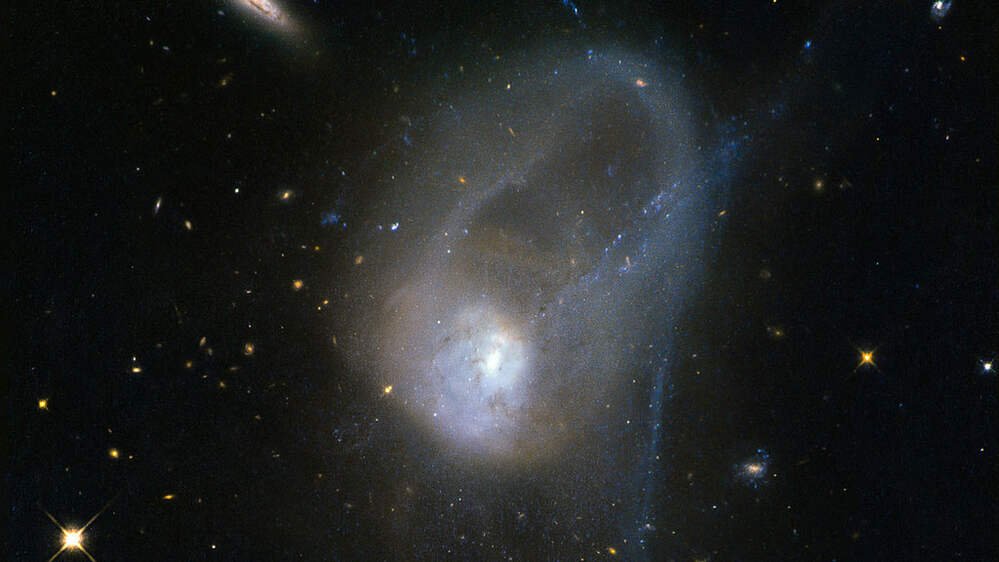Unlocking the mysteries of the cosmos: Machine learning illuminates the relationship between black hole growth, star formation

Introduction
In the vast expanse of the universe, the enigma of black holes has captivated astronomers and astrophysicists for centuries. These supermassive entities, lurking at the center of galaxies, have long been believed to grow through violent mergers. However, cutting-edge research led by the University of Bath, powered by machine learning and supercomputing, has revealed a deeper understanding of the connection between black holes, galaxy mergers, and the formation of new stars. By shining a light on this cosmic puzzle, we enter a new era of discovery that challenges previous notions and promises remarkable insights into the vast expanse of our universe.
A Breakthrough Approach with Machine Learning
Harnessing the remarkable potential of machine learning, scientists have embarked on a quest to refine our understanding of black holes and their impact on galaxy evolution. Traditionally, the classification of galaxy mergers relied on human intuition, leading to potential errors and contradictory research outcomes. However, the Bath-led study pioneers the use of artificial intelligence, specifically neural networks, to train models and classify mergers without the limitations of human biases. By mimicking the human brain's neuronal signaling, this cutting-edge approach accentuates accuracy and reliability, offering a fresh perspective of unprecedented clarity.
Dispelling Conventional Notions
For decades, the prevailing belief was that black hole growth was predominantly fueled by galaxy mergers. However, the team's revolutionary research uncovers a vital missing piece of the puzzle. The neural network outperforms human classifiers and reveals that mergers alone do not establish a definitive link to black hole growth. Surprisingly, the study shows that merger signatures are equally common in galaxies with and without actively accreting supermassive black holes. Instead, the research highlights that black hole growth is intimately tied to star-forming galaxies, where an abundance of cold gas is present.
The Connection between Black Holes and Star Formation
Within the cosmic dance of creation, the delicate interplay between black hole accretion and star formation unfolds. When a galaxy contains significant amounts of cold gas, a supermassive black hole can draw in this material through its gravitational forces, triggering an energetic process known as accretion. The resulting surge of energy impacts the surrounding gas, influencing its ability to collapse and form new stars. This revelation has crucial implications for our understanding of galaxy evolution as it unravels the intricate relationship between black holes and the birth of stars.
Embracing Diverse Perspectives
This groundbreaking research not only challenges long-held theories but also highlights the importance of embracing diverse perspectives in scientific discovery. By transcending the constraints of human observation and intuition, machine learning provides an unbiased lens through which the cosmos can be explored. This inclusive approach allows scientists to analyze thousands of galaxies simultaneously, generating consistent results over vast samples and unveiling myriad properties of black holes, further propelling the frontiers of our knowledge.
A Glimpse into the Wonders of the Universe
As we peer into the night sky, the results of this research reverberate with awe-inspiring magnificence. Just as the Orion Nebula showcases the dynamic process of star formation within our galaxy, this study unlocks the secrets of galaxies far beyond our reach. By employing machine learning and supercomputing, we embark on a journey of unlimited potential and boundless curiosity. Our understanding of the cosmos expands, painting vivid portraits of black holes, star formations, and the cosmic tapestry that weaves them together.
Conclusion
The marriage of machine learning and supercomputing has propelled us into a new era of discovery. In our quest to comprehend the immense mysteries of the universe, this Bath-led study has shattered long-held beliefs about black hole growth and the formation of new stars. By embracing diverse perspectives and harnessing the power of artificial intelligence, we navigate uncharted territories and unlock the secrets of the cosmos. The journey is just beginning, and each revelation brings us closer to truly comprehending the awe-inspiring wonders that lie beyond our earthly realm.

 How to resolve AdBlock issue?
How to resolve AdBlock issue?